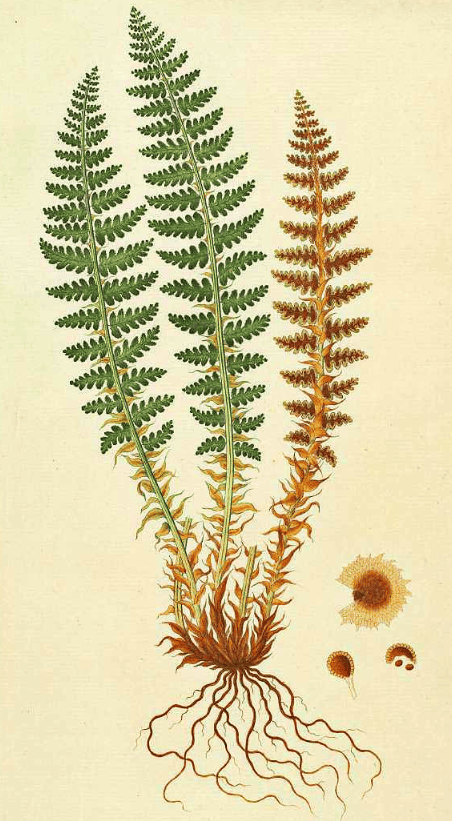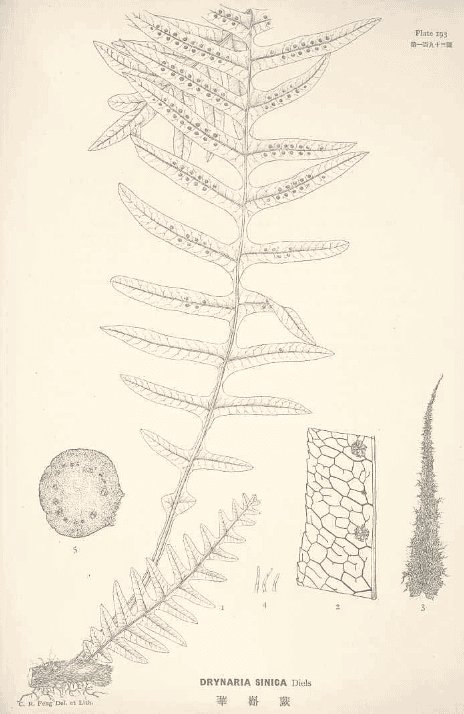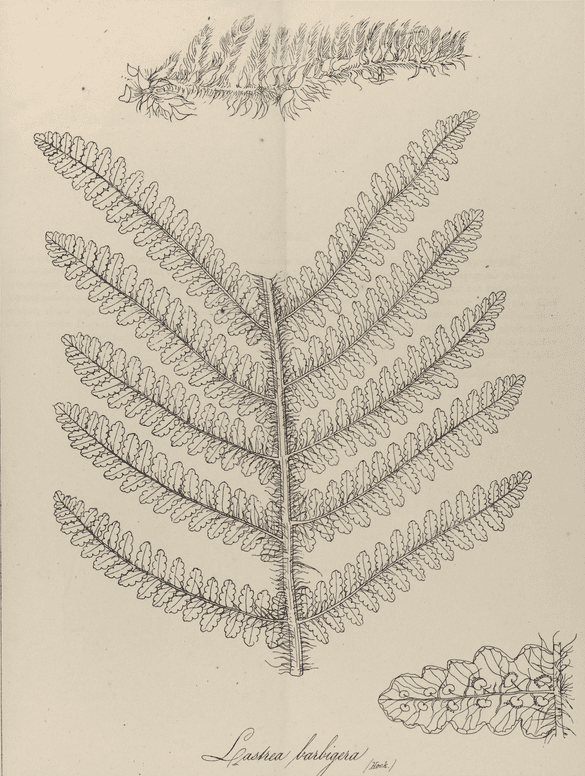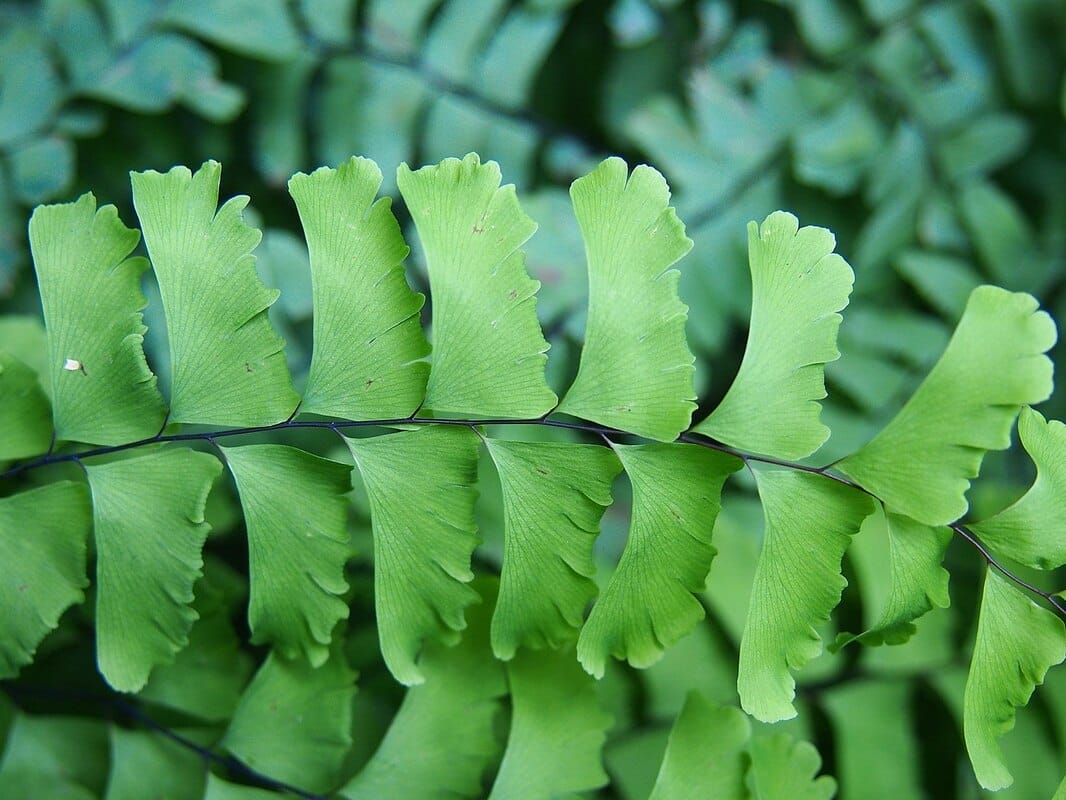Dryopteris seu Drynaria, Re Ral རེ་རལ
Re Ral (Tibet) Dryopteris fragrans
Dryopteris fragransFlora Danica (1761-1883)

|

|
|
Drynaria sinica H.S. Hu, R.C. Ching, Icones filicum Sinicarum (1937) |
Dryopteris barbigera R.H. Beddome, The ferns of British India, vol. 2 (1866) |
 Adiantum pedatum
Adiantum pedatum(Photo by Nova) (Wikimedia)
Botanical name:
There several types of Re ral used in Tibetan Medicine:
- Re ral རེ་རལ།: Adiantum pedatum, A. aspidium (Drynaria sinica, Dryopteris barbigera according to some sources
- Btsun mo re ral (Brag Spos) བློན་པོ་རེ་རལ: Lepisorus waltoni, L. macrospaerus
- Blon po re ral (Brag skya ha wo) བཙུན་མོ་རེ་རལ: Corallodiscus kingionus (according to some sources Dryopterls fragrans)
- Rgyal po re ral རྒྱལ་པོ་རེ་རལ: (Drynaria propinqua, Dryopteris sinica etc.)
This has three types:
b. Ldum bu re ral ལྡུམ་བུ་རེ་རལ: Dryopteris fragrans, Drynaria sinica
c.. Guy ru krug khyll Polystichum squarrosum (syn. P. neolobatum)
Other species including Aleuritopteris argentea and Polypodium spp. are also commonly listed as a source of Re ral and are perhaps local substitutes.
Parts used:
Root
Temperature & Taste:
Cool, dry. slightly Sweet, Bitter
Uses:
1. Clears Heat, Resists Poison:
-Food poisoning
-Mineral Poisons; Herb Poisons; ‘Compound Poison’
-Fever due to Poison or Toxic-Heat
-Dysentery with Fever
-used in some of the the Rin Chen (Precious Pills)
2. Clears Heat, Promotes Healing:
-Wounds, Trauma
Dose:
Powder: 1–3 grams
Decoction: 3–9 grams
Comment:
1. In Tibetan Medicine, Drynaria (Ldum ru re ral) is called ‘King Fern’, Lepisoris spp. (Brag spos) is called ‘Queen Fern’, and Corallodiscus (Brags skya ha wo) is called ‘Minister Fern’.
2. The identification of the various types of Re ral is ambiguous as different sources list different species under the same Tibetan names.
Obviously a number of different genus and species are used, some probably being locally accepted substitutes. The common plants which continually come up as sources for Re ral are Drynaria propnqua, Dryopteris fragrans, and Drynaria sinica etc.
3. A number of genus and species of Fern supply Re ral in Tibetan Medicine, just as a number of genus and species supply Dryopteris Mian ma guan zhong in TCM. Bensky states that more than 60 species from 11 genus supply Mian ma guan zhong in different areas of China.. All the Re ral medicines are types of Ferns, and so it suggests the functions for Re ral and common to many Ferns.
4. Drynaria baronii is given by Bensky as a local variant of Drynaria Gu Sui Bu, used in TCM. However, the uses of Drynaria Gu Sui Bu and Re ral of Tibetan Medicine are very different. Some classical TCM authors recommended Drynaria Gu Sui Bu for toxicity too.
5. It is also worth noting that Dryopteris crassirhizoma (Mian ma guan zhong) is used in TCM, primarily for Worms. However, it has a secondary effect against Heat and Toxin suggesting it may be a useful substitute.
Substitute:
1. Drynaria filix mas is used in Buryat region.
2. Dryopteris Mian ma guan zhong is a likely candidate as a substitute for Re ral. It is also used against Heat and Toxin.
Main Combinations:
Major Formulas:
Cautions:
None noted
